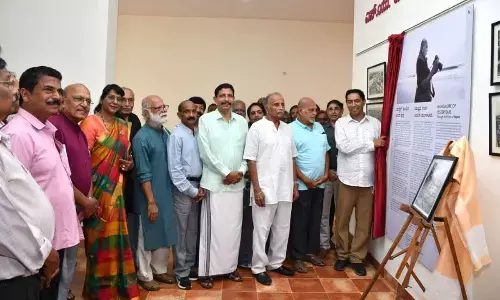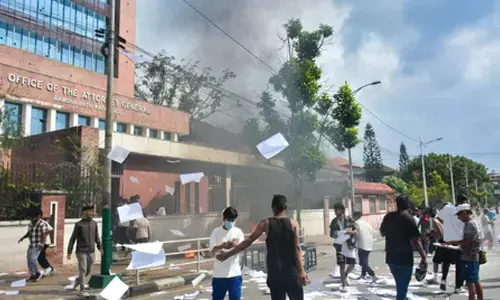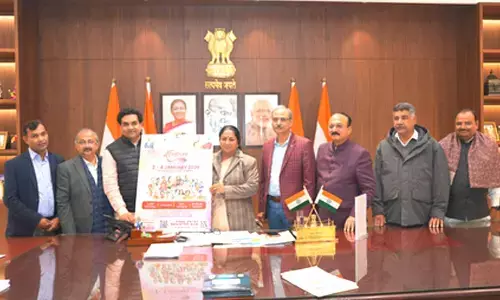In the Land of the Rising Sun, India needs to shine bright
In the Land of the Rising Sun, India needs to shine bright, S Madhusudhana Rao, Manmohan Singh. Though India opened up in the 1990s, both the Japanese governments and that country’s industrialists were slow to realise the huge potential India has.
Prime Minister Manmohan Singh can look back with satisfaction at the end of his term as the head of UPA-II government in a few months’ time that his Look East policy has paid rich dividends. One of his triumphs is bringing India and Japan closer than ever. Traditionally, Japanese are cautious either in rushing investments or allying with other countries. India is no exception.
Though India opened up in the 1990s, both the Japanese governments and that country’s industrialists were slow to realise the huge potential India has. However, in the last few years, the scenario has changed with the Japanese confidence in this country started growing. Otherwise, in the last two months we wouldn’t have had a rare visit of Japanese royals followed by that of Defence Minister and Prime Minister Shinzo Abe last week.
The Japanese Prime Minister’s three-day visit has not lost its import on the titans of Indian industry as he had addressed them and attended the annual India-Japan summit meeting. Both countries consider it very important since Japan is the only country after Russia to have such an arrangement. But more important was Delhi’s invitation to Abe to be the chief guest at the Republic Day celebrations. Traditionally, it goes to a head of state or government and underlines the importance Delhi attaches to that country and the invitee. Abe’s acceptance of the invite and his presence at the R-Day parade had given a big fillip to the overall nature of Indo-Japanese relations. In fact, he was the first Japanese Prime Minister to witness the spectacle and express his admiration. The same kind of admiration Abe also has for Manmohan Singh and considers him as his guru.
Probably, Abe is the first Japanese leader to openly seek strategic partnership with India. Since he first came to power, he visited India in 2007 as Prime Minister and four years later as opposition leader and last week again as PM. Obviously, Abe and Singh have struck a personal rapport that has facilitated the Indo-Japanese relations reach new heights.
Much-expected defence deals had not come through during the Abe-Singh summit parleys; but holding high-level national security talks between the two sides was a positive outcome. However, Abe’s statement that “a strong India and a strong Japan can come together and I think we can do wonders” strongly indicates that Tokyo is interested in boosting defence ties with Delhi in future.
One reason is, of course, Japan’s stormy ties with China; some historical and other territorial. The alleged Japanese war crimes in China during the World War II have always been a point of friction between the two countries and Beijing doesn’t lose any opportunity to accuse Tokyo of its ‘sins.’ Now, both countries are at loggerheads over Chinese claims to disputed islands in South China Sea. Of more concern to the Japanese and their ally the US is Beijing’s belligerent behavior. India too has issues with China – from border disputes to oil exploration off Vietnam – and Delhi-Tokyo interests coalesce where Beijing differs.
The growing Indo-Japanese relationship from low level to key partnership has not escaped the attention of China. Its media has stressed before and after Abe’s visit to this country that Sino-Indian ties are strong and they can’t be shaken by other forces, in an obvious reference to Japan edging towards India. Though Beijing is watching the developments carefully and assessing their impact on the Asia-Pacific region, China is cautious enough not to annoy India over Abe’s visit.
Meanwhile, the Indian industry hopes to benefit immensely from the increased India-Japan interaction. It was evident from the way industrialists had lined up at the meet of the Federation of Indian Chamber of Commerce and Industry for Japanese investment and know-how. At the same time, the government is looking for managerial skills and infrastructure development which is pathetically bad and has proved to be a stumbling block for many Japanese companies to open shop here. India needs at least a trillion-dollar investment for the development of world class roads, railways, ports and airports.
While Delhi is trying to woo other countries to be key partners in rebuilding the country’s rickety transport systems, Japan can play a crucial role in this major task.
Japan is already involved in the $90 billion Delhi-Mumbai Industrial Corridor and it is hoped that will participate in a big way in the proposed Chennai-Bangalore industrial belt. The two countries’ interest in each other is mutual as the trade between the two sides has been increasing exponentially. Bilateral trade in 2012-13 was about $18.5 billion and Japan ranks fourth in terms of investment in India.
Between 2010 and 13, Japanese had invested about $15billion in this country. With promises made by Abe, India could look forward to more fruitful cooperation with Japan in fields as diverse as infrastructure development and maritime exercises. Whichever government comes to power in New Delhi after the general election, it is essential to continue not only the same relationship with Japan but further strengthen it.
Woman injured in stabbing attack in Tokyo, suspect at large
Bengal cop booked for murder over mysterious death of woman home guard, SIT to probe case
Staffer recalls horror of 7-kg gold robbery by armed gang in Karnataka’s Hunsur
25-Year-Old Airline Cabin Crew Member Dies At Gurugram Party; Police Begin Investigation

















